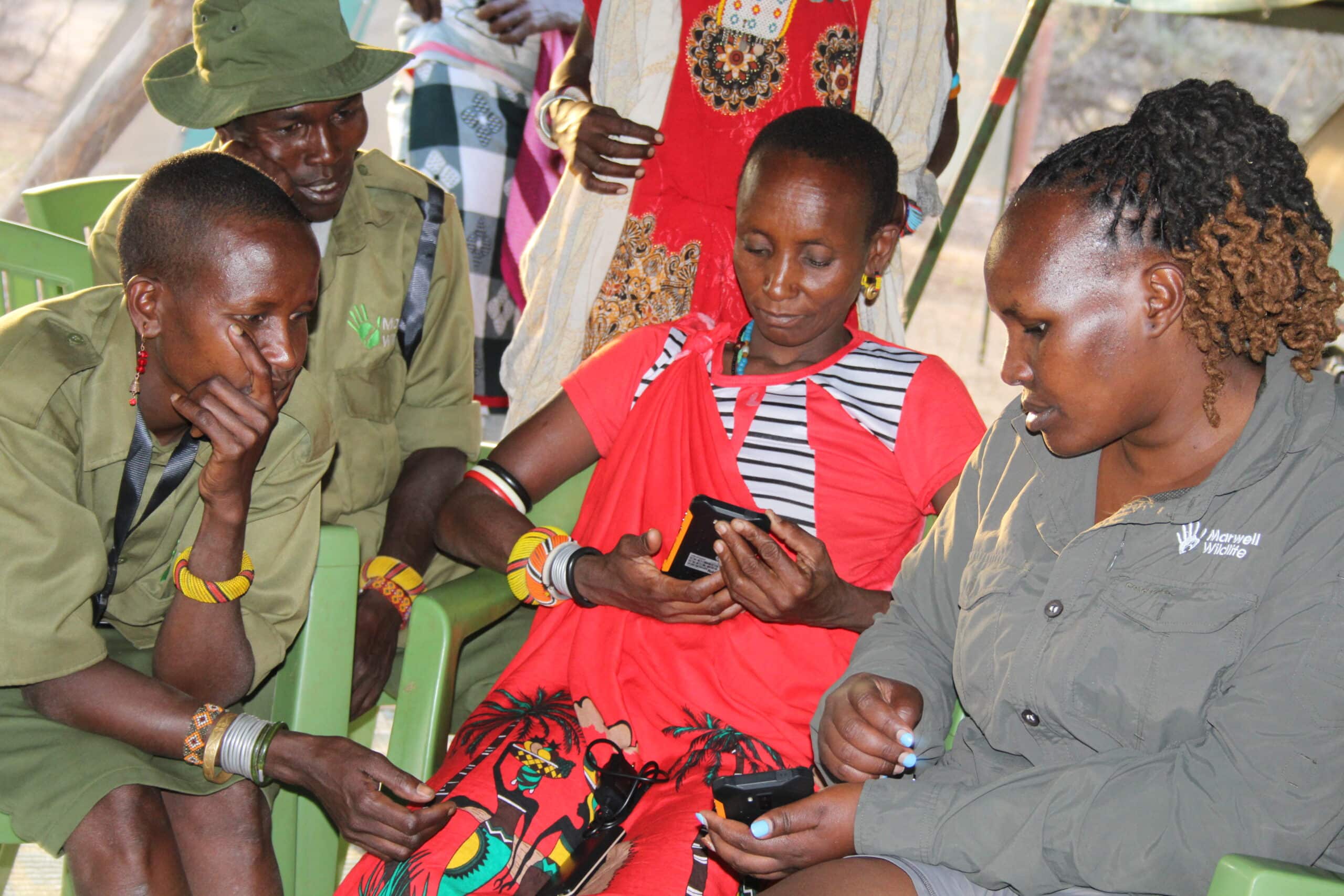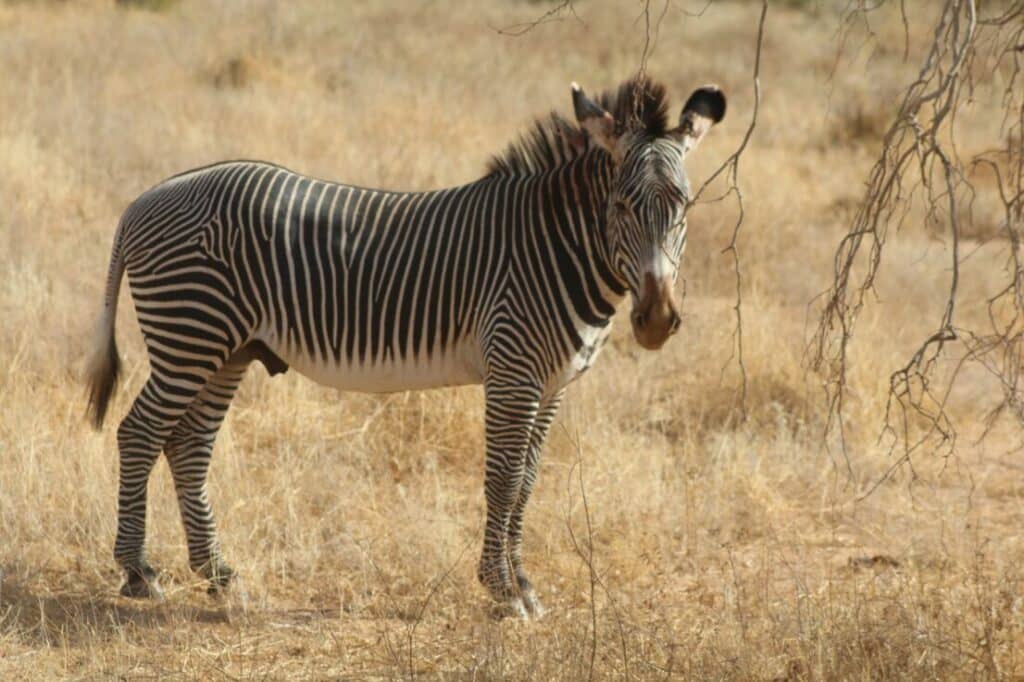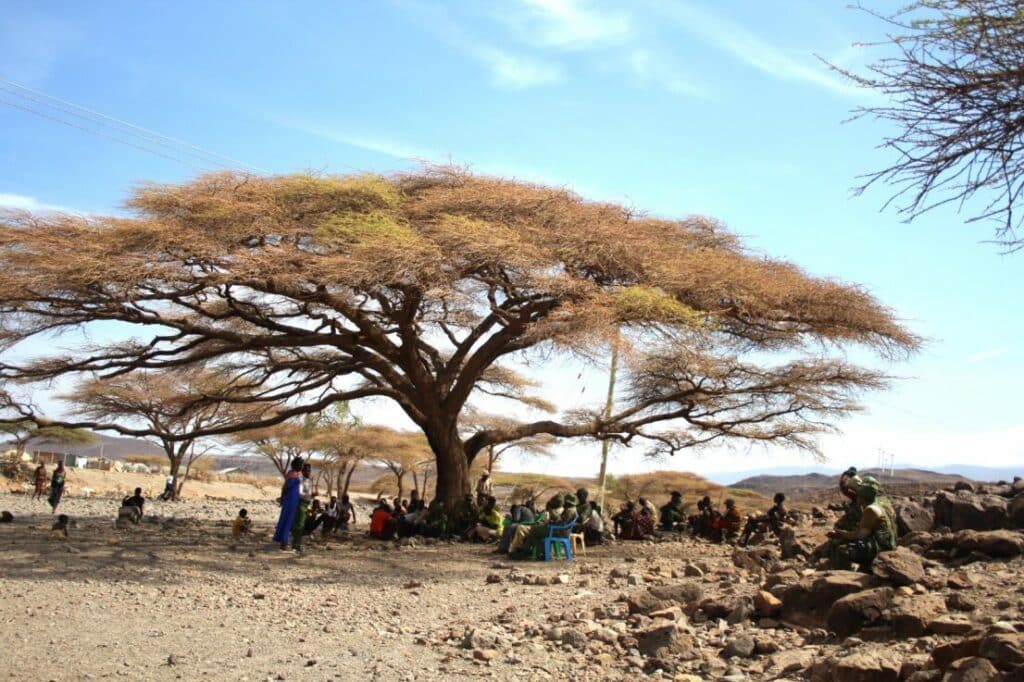Monitoring Grevy’s Zebra in Kenya
April 16, 2024
April 16, 2024

2023 was a difficult year for both wildlife and people due to the gruelling drought conditions, however our Community Scouts continued their work regardless. Twelve teams of six women and 18 men conducted regular foot patrols and set up camera traps overnight to record wildlife, with focus on the Grevy’s zebra. They were supported by our Field Assistant, Sakimba Lesoloyia, who provides timely feedback on all records, troubleshoots any field related issues as well as data entry on the GPS enabled phones we are using.
Once again, monitoring efforts increased with scouts walking nearly 15,800 km during 2,413 patrols, an increase from 2022. Occasions of observation and actual numbers of Grevy’s zebra were much increased. At least 80 individual zebra were seen but also small (5-20 animals) and large (over 20) groups. 14 lactating females as well as foals and juveniles were recorded. In summary, data show that the number of Grevy’s recorded in 2023 was more than double the numbers in 2022. This can mostly be explained by an expansion of monitoring to two new areas (Kisima, where most Grevy’s were sighted, and Gatap). Once again Dik-dik Madoqua guentheri and gerenuk Litocranius walleri were the most spotted species and black-backed jackal Canis mesomelas remained the most sighted carnivore. Sightings for all three species were much increased on 2022. Observations of leopards Panthera pardus, however, were down.
All our scouts’ GPS phones are using SMART* Mobile technology. As this application is often updated, we provide regular sessions to our scouts to train them on any new aspects as well as refreshing their existing skills on phone recording and camera trap setup. This year, we combined the training with a team building and wildlife exposure tour. While the scouts are in the wild daily, they rarely get to see certain types of wildlife, especially close- up.

“You could see the excitement on their faces”, Enrita, our field team leader, recalls a game drive in Samburu National Reserve. “Some of them seeing wildlife they have never seen in their lifetime. You could see the smiles and hear murmuring among themselves in low tones upon every sighting, trying to identify the wildlife.”
An elder who accompanied the scouts on the trip told the group how inspired he had been. He is going to pass stories to other elder representatives and his community too, about what he has seen. He encouraged the scouts to initiate the conversation concerning conservation within their communities, since they are ambassadors to teach their friends, elders, and families to conserve and embrace conservation.
Monitoring wildlife is not all our Kenya team does. They hold quarterly meetings with all scouts so they can exchange experiences, good or bad, and learn from another. These gatherings are usually followed by meetings with community elders and often the local Kenya Wildlife Service (KWS) warden where local issues, grievances and ideas are addressed. Community meetings are organised through the year to discuss Grevy’s zebra conservation, security issues and human-wildlife conflict. These kinds of meetings increase the cooperation and feeling of inclusion and ownership of communities, leading to better awareness of the threats to wildlife and its protection.

We have grown our working relationship with KWS during the drought, when poaching of wildlife, especially Grevy’s zebra and ostrich Struthio molybdophanes, increased drastically in the far north and conflict resolution became particularly important. The KWS wardens are crucial to any wildlife incidents that are reported by our scouts. They are in constant communication with the vet and our office, liaising with us on all Grevy’s zebra matter, and lastly providing us with security during our field trips.
*SMART (Spatial Monitoring and Reporting Tool) is an open source and freely available software application. This software makes it possible to collect, store, communicate and analyse scout-collected data on wildlife, illegal activities, patrol routes, and management actions to understand where efforts should focus, and evaluate scout performance.